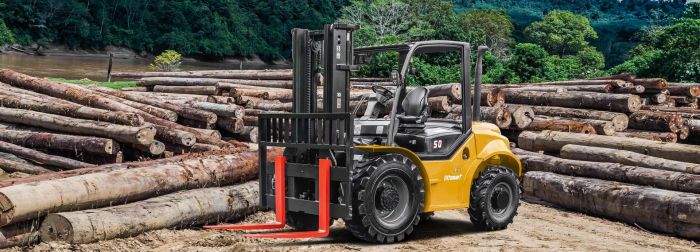The world of material handling has rapidly evolved, and at the heart of many warehouse, logistics, and industrial operations sits the essential forklift. If you're considering investing in new forklifts for sale, 2025 presents a prime opportunity.
From cutting-edge technologies to eco-conscious options, today's forklifts offer more than just lifting power—they offer smart, safe, and sustainable solutions tailored to modern demands.
In fact, advancements in smart machinery and clean energy are reshaping not just logistics, but entire industries—including how we construct buildings. If you’re also exploring innovations in construction equipment, see how technology is shaping the future of homebuilding—from smart forklifts to connected job sites.
Emerging Trends in Forklift Technology

Electrification and Sustainability
Electric forklifts are leading the charge as more businesses aim to reduce their environmental footprint. These machines not only produce zero emissions but also operate more quietly and with less maintenance than their internal combustion counterparts. Lithium-ion batteries, in particular, are transforming operations with their faster charging, longer lifespan, and consistent power delivery.
Hydrogen fuel cell forklifts are another innovation gaining ground, particularly in large-scale operations. They offer the performance of IC forklifts with the green credentials of electric models—refueling in minutes and running for hours without harmful emissions.
Automation and Smart Features
Automation isn't just for tech giants anymore. Forklifts are increasingly being equipped with autonomous navigation capabilities, allowing them to move goods with minimal human input. Onboard sensors, cameras, and real-time data feedback can help optimize routes, prevent collisions, and monitor performance.
Telematics systems are also becoming standard in many models, enabling managers to track usage patterns, maintenance needs, and driver behavior. These insights can drive efficiency and safety improvements across the board.
Key Considerations When Purchasing a Forklift
Assessing Operational Needs
Choosing the right forklift starts with a clear understanding of your operational environment:
- Load Capacity: Determine the heaviest loads you’ll be moving. Overloading a forklift can compromise safety and performance.
- Lift Height: If you’re working in a high-bay warehouse, the forklift needs to reach those heights safely and efficiently.
- Operating Environment: For smooth warehouse floors, cushion tires may suffice. Rougher outdoor surfaces may require pneumatic tires.
- Frequency of Use: High-usage environments benefit from durable, low-maintenance models—often justifying the investment in new over used equipment.
Choosing the Right Power Source
Each power option suits a different need:
- Electric Forklifts: Ideal for indoor use in industries like food, pharmaceuticals, and retail. They're quieter, cleaner, and often eligible for sustainability incentives.
- Internal Combustion Forklifts: Great for outdoor environments where power and endurance matter, such as construction or shipping yards.
- Hydrogen Forklifts: A growing option in high-intensity operations where rapid refueling and continuous operation are priorities.
Evaluating Total Cost of Ownership (TCO)
Don’t let the price tag be the only factor in your decision. A slightly more expensive forklift may pay off over time with:
- Lower Fuel/Energy Costs: Electric models can significantly reduce your energy expenses.
- Reduced Maintenance: Newer models with advanced diagnostics often require fewer service interruptions.
- Improved Operator Comfort: Ergonomic controls and smoother handling reduce fatigue and boost productivity.
- Long-Term Resale Value: Well-maintained forklifts with modern features tend to retain higher resale value.
Exploring Forklift Options
New vs. Used Forklifts
While new forklifts offer the latest tech and warranty coverage, used models remain a cost-effective alternative for businesses with tighter budgets or lighter operational demands. However, buying used comes with some caveats—always check the service history, inspect wear and tear, and consider how readily available replacement parts are.
Rental and Leasing Alternatives
Forklift rentals and leases can offer flexibility and minimize upfront costs, making them ideal for seasonal spikes, short-term projects, or businesses testing different models before purchase. Many providers also offer rent-to-own programs that apply a portion of rental payments toward eventual ownership.
Safety and Compliance
New forklifts often come equipped with enhanced safety features—automatic speed reduction when turning, load-sensing stability systems, and operator presence detection. Staying current with regulatory standards and training is essential, and investing in a newer model can help ensure compliance with evolving occupational health and safety requirements.
Conclusion
Purchasing a new forklift is a strategic move that can improve productivity, enhance safety, and contribute to a more sustainable operation. As the market continues to evolve, with smarter and cleaner machines available than ever before, now is a great time to consider upgrading or expanding your fleet.
When evaluating new forklifts for sale, weigh not just the upfront cost but the long-term value, performance, and adaptability that modern forklifts offer. With the right investment, your forklift can do more than just lift—it can lift your entire operation.
Post Comment
Be the first to post comment!





